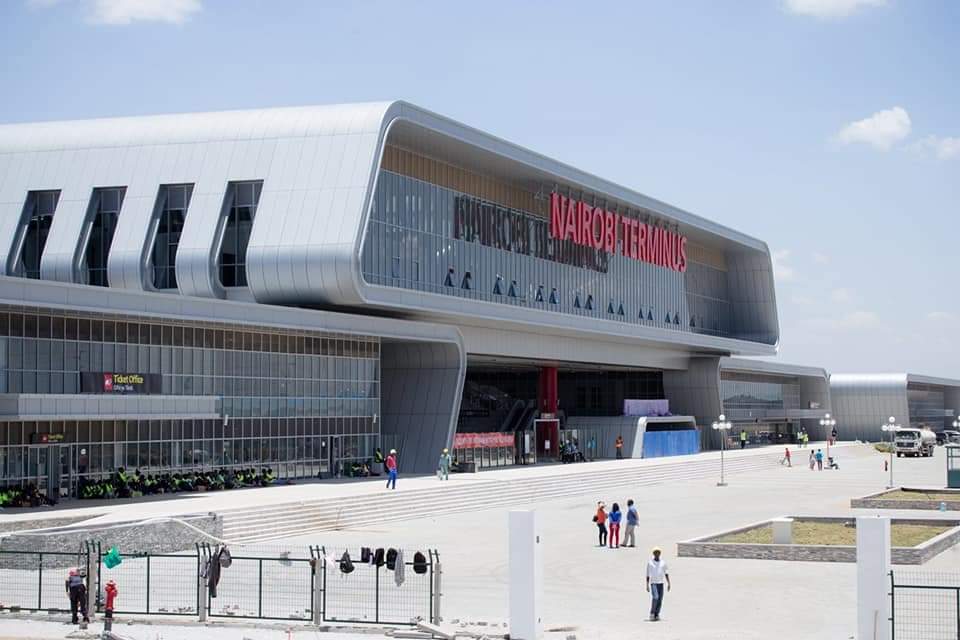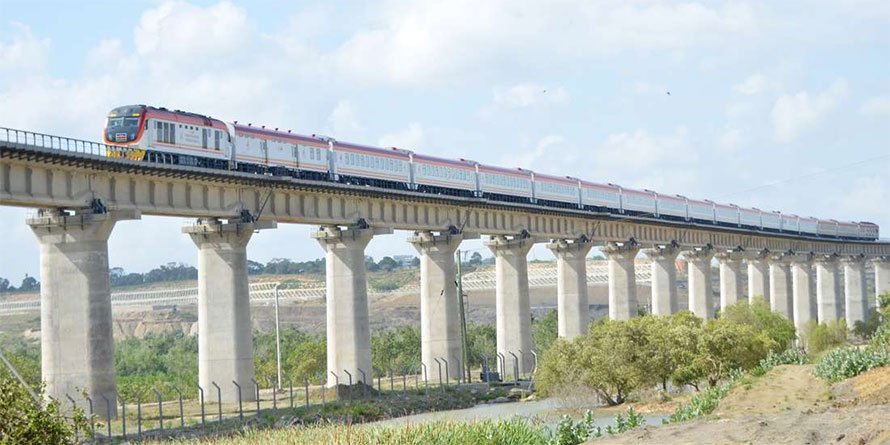Investigations
SGR White Elephant: The Men Who Robbed A Country
Published
4 years agoon
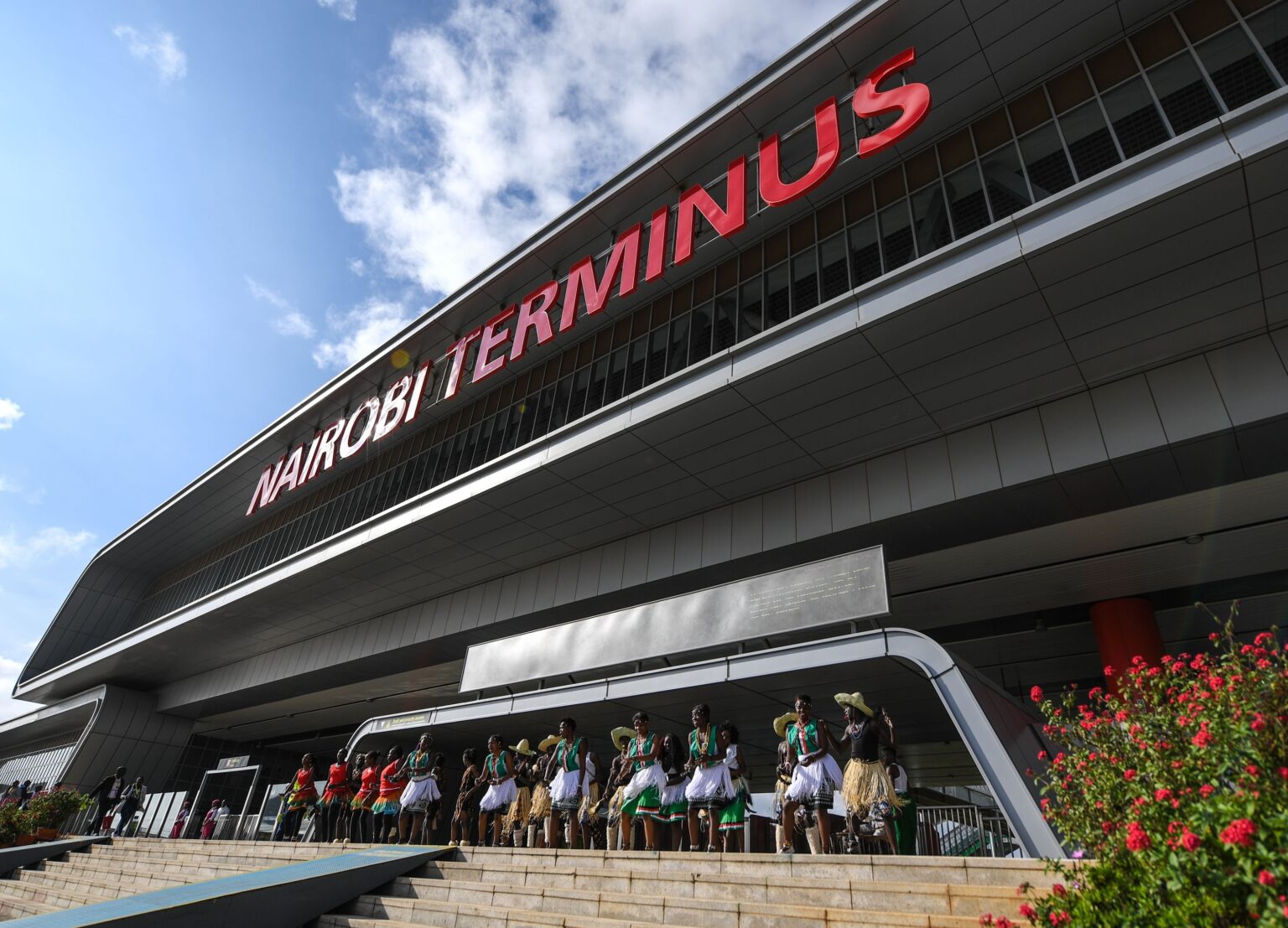
This week the story of SGR ones again hit the media discussion lines following publication on a daily that Mombasa Port could be up for grabs for the Chinese following Kenya’s bad record in repaying the loans. It’s said that a report by Auditor General has raised an alarm that the country would lose the port which was used to secure the SGR loan should the country default in paying the loan to China.
Treasury unsurprisingly lay down the fears saying the country is in tight track in repayment and that the port was safe. But just how did Kenyans fall into the pit that now threatens the country losing its major assets even as taxman overburdens the overly milked taxpayer.
Retired President Mwai Kibaki met Ugandan President Yoweri Museveni on October 28, 2008, regarding the SGR. It was mutually agreed that the railway line would be a white elephant if Kenya decided to go it alone.
This position changed after brokers introduced CRBC to the Kenyan government in 2009. In 2008, two Kenyans — Leonard Mwangi Ndungu and Peter Maingi Gatere — had registered a company with a similar name, China Road and Bridge Corporation Kenya, with registration number C 166624. When this became public, the Registrar of Companies was ordered to deregister the company.
And while the Kenyan government has always maintained that the SGR was a government-to-government contract, hence there was no need for competitive bidding, the contracts show the deals were entered with CRBC and China Exim Bank.
What was a grand dream that would have connected Mombasa to Kampala is a railway to nowhere that ends in a bush near a cattle market that is inaccessible when it rains.
FEASIBILITY STUDY
The death of this dream, it appears, began on June 25, 2012 when a team of nine negotiators — five from Kenya and four from CRBC — sat to discuss the components of a feasibility study on the viability of the SGR.
On the Kenyan side were Mr Solomon Ouna, and Mr David Mwadali, both engineers, Mr Alfred Matheka, Ms Maryanne Kitany and Mr Stanley Gitari.
“The Government of Kenya and CRBC signed a memorandum of understanding on August 12, 2009 for the feasibility study and preliminary design of the Mombasa-Nairobi section of the Standard Gauge Railway which has been completed to the satisfaction of the Kenya technical team,” say minutes from the meeting.
“CRBC and Kenya Railways now need to enter into a common contract,” add the minutes.
FIFTEEN DAYS
And like vultures waiting on the sidelines for pieces of meat to drop out of a plate, the first commercial contract for civil works was signed in a record 15 days after the results of the feasibility study were adopted on July 11, 2012.
Ideally, such a huge contract, despite being a government-to-government deal as the State has always maintained, requires time for naming negotiating teams, a board meeting by the concerned authority, followed by seeking and getting approvals from the ministry concerned and the Attorney-General.
This is even before you factor the time needed to draft a bill of quantities for the construction at hand plus the time needed for technical teams from both sides and lawyers to draft and look at the details in the contracts before they are presented for signing.
So were the necessary procedures followed as required by law in such a short time? What we now know is that in total, Kenya signed four contracts for the first phase of the SGR — two of them during the grand coalition government and the last two immediately after Jubilee took office.
OPERATION CONTRACT
The first one with CRBC for civil works was signed on July 11, 2012. The second one for the supply of locomotives and rolling stock was also signed with CRBC a month later on August 29, 2012. The third one for financing the project was signed with China Exim Bank on May 11, 2014.
And when they were done with building the railway, imported the locomotives and rolling stock, the next avenue of making money was the operation contract.
This contract was also handed to CRBC. It would later hand this over to its subsidiary — Africa Star Railway Operation Company Limited — to carry out the day-to-day running of the train service.
For close to two years now, Kenyans have been waiting for President Kenyatta to make public the contents of the SGR contracts signed between the government and the Chinese financiers and contractors as promised in December 2018.
And, while the President is yet to honour his promise, which would have put to rest speculation that Kenyans got the short end of the stick on the financing and building of the SGR, the government has been trying to review the contract behind the scenes.
It is understood that after President Kenyatta made the promise to make public the contract, the office of the Attorney-General and the Transport ministry explained to State House the implication of such a ”breach of contract” given that it explicitly said the contract would not be made public.
Just why such a big contract that would burden taxpayers for decades to come became a secret document is puzzling.
CRBC has refused to provide key information protected by the confidentiality clauses in the contract.
“Publicity and disclosure of any kind hereto to any third party not involved in the present contract requires the written approval of the other party. Such an approval shall be required after the performance of the present contract,” a clause in the contract says.
Government spending is guided by, among several statutes, the Access to Information Act, which is supposed to enhance accountability, transparency, and public participation.
Why the State decided to enter into a confidential contract with a foreign company and financier on how to spend taxpayers cash on a public project is still an unanswered question.
Meanwhile, taxpayers are paying through the nose for the mistakes they committed either out of ignorance or by design after Kenya decided to go it alone following the withdrawal of Uganda from the project.
The first Sh25 billion of the Sh324 billion borrowed from China for phase one of the railway was due last month. Another Sh25 billion will fall due in June. Treasury has set aside Sh35 billion in the supplementary budget to take care of the repayment to China’s Exim Bank.
Even though not made public, the contract landed in many hands including Kenya Insights that highlighted how the greed of the Chinese and Kenyan mafias ripped off the country in the SGR debacle.
In February 2020, news broke that SGR landscape designers had used a whoping Sh1 billion on buying grass. Grass, that natural green vegetation that is first to grow in plenty when plantation burns or soil is shifted. How can it have possibly cost a billion shillings to plant it?
Well, the noise died down amid the danger posed by COVID-19, the pandemic and Kenyans moved on to the next topic. Well, not so fast.
At least, the original contract, a copy of it, had finally left its lock-and-key-thrown away into the sea cabinet. Kenyans, I mean journalists at the Nation Media Group had got hold of it and had analysed it, therefore confirming the intellectual’s narrative that SGR was overpriced, unnecessary and a cash cow.
It is common knowledge, from online sources and from articles by economists notably David Ndii(From Game Changer to Railway to Nowhere: The Rise and Fall of Lunatic Line 2.0) The Elephant – Speaking truth to power and others like the Ufungamano Group that the SGR project costs were inflated.
Ndii, a force critic of the SGR project has consistently termed it useless.
The Government of Kenya (GoK) and China Road and Bridges Corporation (CRBC) had pushed through with an unnecessary project which made no economic sense so as to grease the hands of leaders both in Kenya and China.
The intellectuals argued that the Metre Gauge Railway (MGR), which the Lunatic Express runs on should’ve been upgraded at a far cheaper cost.
What the SGR contract which has been seen by KenyaInsights says, the level of theft of Kenya money that had been loaned from China was unprecedented to say the least. The railways runs at a cost of Sh1 billion per month, which is unsustainable and losses are bound to accrue from its running. It is even better, ironically, to stop the trains than to run them.
During its planning and construction, the contract reveals that the managers were the greediest of all greedy of the earth. China which prides itself with tough stance against corruption had allowed its staff abroad to engage in blatant abuse, disrespect and theft of resources.
Apart from the sensational reports that we’ve seen in some quarters, and the manner in which some people still believe that anyone raising issues with costs surrounding infrastructure projects especially SGR are anti-government or hates the Kikuyu government to be exact. No it is not.
According to the contract, there are some information that was left out that was not covered by the mainstream media. The information reveals the level of theft of Kenya taxpayers money, the money was a loan taken in the name of Kenyan taxpayers signed by then Managing Director of Kenya Railways Nduva Muli.
Mr Li Qiang was the General Manager of CRBC and a representative of Chinese government in Kenya. The contract’s names is: Supply and Installation of The Facilities, Locomotives, and Rolling Stocks for the Mombasa – Nairobi Standard Gauge Railway Project.
(Jacob Juma a once influential billionaire who broke ranks with his peers going on to expose their underworld dealings and would later be assassinated wrote in a memoir about the GM on his page “The Group GM of China Rd & Bridge E.Africa Mr. Li Qiang is the MOST CORRUPT Chinese on African soil.”)
The claims of inflated costs of the SGR project was in January 2020 supported (not that he didn’t also reveal it in the past) by the African Union High Representative for Infrastructure Hon. Raila Odinga in a local TV station. During the interview Raila said that he and former President Mwai Kibaki in the coalition government had tendered the SGR project at a lower cost, but when President Uhuru Kenyatta and his deputy William Ruto took over in April 2013, they cancelled the contract and re-tendered a fresh at inflated costs.
“Before we left government with Mwai Kibaki, we awarded SGR tender to a company at USD2.5billion. But when jubilee came in in 2013, they canceled the tender and awarded it back to the same company but at USD4.5billion. Obvious inflation of figures”, Raila Odinga, told NTV Journalist Joseph Warungu.
Inflating the costs
Perusing through the contract, it is not a mean fit, the document is big but one cannot escape the charade of Section 13 Appendix A: Non-Binding Bill of Quantities area. This is 44 pages of pure thuggery.
The looters of our country led by UhuRuto saw it fit to raise the prices of basic commodities to levels unpresented for example a mere bench cost Ksh180,000. The prices were quoted in United Stated Dollars (USD) and the conversion rate for this article will be USD 1 for Ksh100.
A battery forklift that costs about Ksh900,000 was bought at Ksh1.37 million.
Acetylene cylinder normally worth Ksh5,000 was purchased at Ksh38,040.
A good lighting arrester retailing for between Ksh500 and Ksh3000 was sold to Kenya at the price of Ksh11,680.
It is important to note that the prices given already have a mark-up and that the price quoted by the looters of Kenya, the difference is what they took home.
The level of theft that was carried out in this project makes the government and all those that benefited in the inflated costs term real news as fake.
KenyaInsights.com is aware that the Chairman of the Transport and Public Works Committee in Parliament who is also the Pokot South Member of National Assembly David Pkosing told Voice of America (VoA) news that the news about Kenya paying for grass along the SGR route at Ksh1 billion were rumors and fake news.
“Let them petition parliament and tell us this is inflated for this reason we known. They have no evidence. People when they don’t have evidence, they create rumors and peddle what I call fake news”, Pkosing said.
Though the Kenya government has not made public what they agreed with the Chinese government as pertains to the SGR Project, the contract also revealed as already reported that Digital voice recorders cost as little as Sh2,000 in Nairobi. These small costs here and there multiplied by the number of the gadgets being bought added up to billions of shillings.
CRBC also billed Kenyans Sh38 million to install a passenger guiding system, Sh14.6 million for each security system at the railway stations, Sh26 million for each luggage inspection system and Sh14 million for passenger monitoring systems at the stations.
The company also said it bought 46 A3 laser printers at Sh513,700 each for use at the stations during construction. The Nairobi station received five of these printers. These printers currently cost between Sh40,000 and Sh75,000.
Each of the intermediary stations also got a 30KW generator for use in case of power outage; Mombasa and Nairobi got two. The diesel generators, according to the contracts, were acquired at Sh4.26 million each. When the Nation asked around, we were told we could have one for Sh1.5 million.
Additionally, Kenyans paid Sh5.4 million for each of the 31 boreholes dug by CRBC in the intermediate stations. The Sh5.4 million is for drilling alone minus equipping and commissioning. The entire SGR from Mombasa to Nairobi has seven stations, which means each one was supposed to have three boreholes, a geological impossibility.
CRBC also said it needed to import six ZX7 DC/AC arc-welding machines as each station needed six of these for construction. These, according to CRBC, were bought at Sh442,872 each. We were able to get the same for Sh25,000 from Chinese manufacturers.
Initial plans fail and current suffering
The SGR was initially planned to run from the port of Mombasa in Kenya, through to Kisumu and into Uganda. The looters built it in phases, looting huge chunks of money and going for a new loan for the Nairobi – Naivasha line, which apart from paying in cash, they made sure Chinese officials have a bigger stock of Rhino Horns, elephant tusks, lion tooth and leopard hides by passing it through our National Park.
The sickness in this contract saw a bus that normally costs about Ks5 or Ksh6 million was purchased at 25 million. A van that cost Ksh2.4 million was bought at Ksh12 million. Mark you, the contract, in the first pages states that all imports were tax-free.
The Chinese staff, who are mostly derived from the scum of society, brought to Africa as punishmesnt lived lke Kings. According to the contract, over Ksh235 million was used for their entertainment. It is true that the chief engineer had at his disposal over Ksh5 million in telephone costs/ airtime.
Has the reality of the leaked contract been buried under a plethora of PR – Public Relations exercises? It is now curious that the mainstream media is not talking much about SGR’s shortcoming, the public debate ended after Coronavirus came into Kenya. However, before that, the same media stations accepted advertisement by Kenya Railways, the co-owners of SGR the next day after the expose’ on the sh1 billion grass. One headline the next day read: ‘Kenyans trained to take over SGR operations – official’.
The PR and the denial by the government doesn’t suppress that fact that Kenya borrowed more than Sh450 billion from China to build the 472-kilometer railway from Mombasa to Nairobi and and additional largely unused routes to Naivasha and Suswa.
The PR in the mainstream media is blind to the fact that many SGR workers in 2018 and 2019 came forward to reveal cases of abuse, racism and mistreatment working alongside or rather under Chinese.
In July 2018, a local media house revealed how Kenyan workers were suffering under the Chinese, mostly immigrant workers without documentation.
Job losses and environmental degradation
There’s no doubt that the economy of coastal city of Mombasa which depended on road transportation of cargo using tracks has suffered.
In their Environmental Social Impact Assessment (ESIA) study done by Kenyan form Africa Waste and Environment Management Centre (AWEMAC), SGR factors this but scoffs it off. It states: ‘most travelers that use road transport will also find it faster, convenient and safe to travel by train” and that ‘bus companies that operate between Nairobi and Mombasa will have to improve their services in order to compete with high quality train services offered”, it also takes a swipe at truckers saying that the over 50,000 drivers and turn boys might be adversely affected and as such ‘they may have to shift their business interests to the new railway in order to survive’.
The deeply flawed and lackluster AWEMAC ESIA report, some slightly over 200 people decided the fate of 2 million people living along the 385 Kilometre SGR line between Nairobi and Mombasa.
The study correctly notes that the train will produce exhaust gases which will settle on the vegetation and interfere with the photosynthesis. However, their solution is just to state that “the project will put up measure to ensure that there is reduction in emission of exhaust gases and smoke”.
What measures were put in place? None
Morocco easily built their train network, fully electrified (25kV 50Hz ac electrification), high speed (320km/h) at a cost of $1.5 Billion, compare to Kenya’s dirty diesel locomotive at over $4.8 Billion. It was a rip-off.
Will Kenya afford to pay?
Kenya loan repayment to China in the current financial year jumped from sh31 billion to sh71.4 billion. The over 130 per cent increase will be shouldered by the Kenyan taxpayer as SGR trains gobbling more than Sh1 billion per month in operational costs is making losses.
The repayments commence after the end of the 5-year grace period, as per the agreements made with Exim bank in May 2014. Kenya has 15 years to repay the SGR loan.
Repayments in the next financial year will increase to KSh84.3 billion, then later KSh111.4 billion in the financial year 2021/2022.
SGR remains a white elephant just like the many other than have left many engineers, govt officials rich, but the country poor.
Kenya Insights allows guest blogging, if you want to be published on Kenya’s most authoritative and accurate blog, have an expose, news TIPS, story angles, human interest stories, drop us an email on [email protected] or via Telegram
📩 Got a Tip, Story, or Inquiry? We’re always listening. Whether you have a news tip, press release, advertising inquiry, or you’re interested in sponsored content, reach out to us! 📬 Email us at: [email protected] Your story could be the next big headline.

You may like

Itibo Police Station in Nyamira Set Ablaze by Locals After Student Shot Dead by Police

Kenya Removes Longstanding Income Tax Benefits for Expatriates

Intelligence Report Reveals How County Officials Fraudulently Award Tenders to Proxies

List of Shame: Opposition Leaders Call on the Public to Boycott Businesses Owned by Persons Linked to Kenya Kwanza

EXPLAINER: Why #WeAreAllKikuyus Hashtag Is Top Trending

Why Young Campus Girl Took My Husband, But Took Him Back

US Scraps Shoe Removal at Airport Screening

Isiolo Governor Guyo Survives Impeachment In Senate

Saba Saba Aftermath: Death Toll Rises To 31 As 500 Arrested

Moses Kuria Resigns from Kenya Kwanza Government

From Billionaire to Broke: The Fall of Humphrey Kariuki’s Empire

How NCBA Software Engineer Opened Floodgates For Mobile Banking System Fraud

Investigation Exposes Alleged Sex Crimes at Alliance Girls High School Amid Institutional Cover-Up

EXCLUSIVE: How Corruption and Mismanagement Have Brought Kenyatta National Hospital to Its Knees

Housing PS Charles Hinga Entangled in Sh 2B Tender Scam

Kenya to Start Commercial Oil Production in 2026 after Tullow Exit, CS Wandayi Confirms

WATCH: New CCTV Footage Reveals Police Brought Ojwang to Hospital Already Dead

Inside the Kibaki Estate Dispute: Power, Bloodlines & the Unfolding Legal Drama

Details Emerge In How ‘Death Squad’ Hatched Plan To Keep Dark Ojwang’s Interrogation Secret in Cell Ending in Death

New Details Reveal How Ojwang Was Tortured into a Coma in Karura Forest in the Presence of a Senior Officer
Most Popular
-
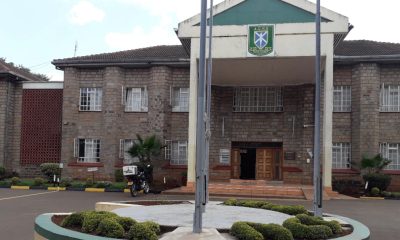
 Investigations5 days ago
Investigations5 days agoInvestigation Exposes Alleged Sex Crimes at Alliance Girls High School Amid Institutional Cover-Up
-

 Business2 weeks ago
Business2 weeks agoHumphrey Kariuki: The Kenyan Billionaire Who Lost State Privileges After Alleged Multibillion Tax Evasion
-

 Grapevine1 week ago
Grapevine1 week agoCS Alfred Mutua Embroiled in Custody Battle After A ‘Quick’ Moment With Kenyan Girl in Dubai
-
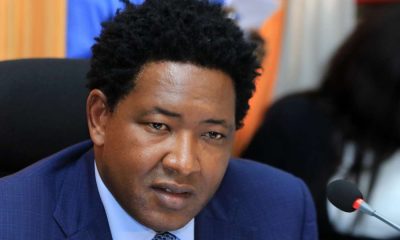
 News1 week ago
News1 week agoOle Kina Fragrance Sets Kenyan Market Abuzz with Million-Shilling Expansion
-
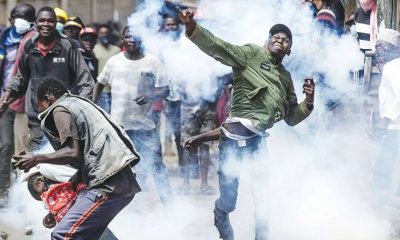
 News2 weeks ago
News2 weeks ago“I Knew Going to State House Was a Wrong Decision,” Omtatah Confesses
-
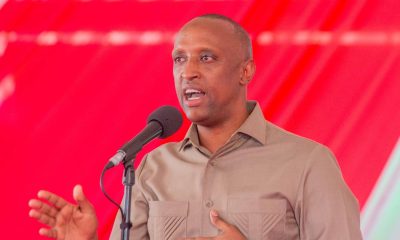
 Opinion1 week ago
Opinion1 week agoWhy Ruto Dumped Isiolo Governor Abdi Guyo: A Political Betrayal in the Making
-

 News1 week ago
News1 week agoOutrage as Kenya Agrees to Buy Defence Equipment From UK in Ksh12.5 Billion Deal
-

 News4 days ago
News4 days agoIrony of Lydia Mathia Seeking Court Interventions Months After Calling Court Orders ‘Mere Papers’ While Spearheading Evictions
